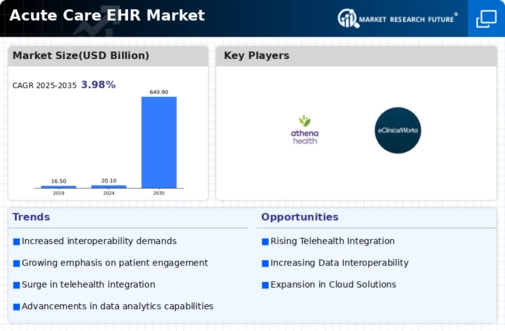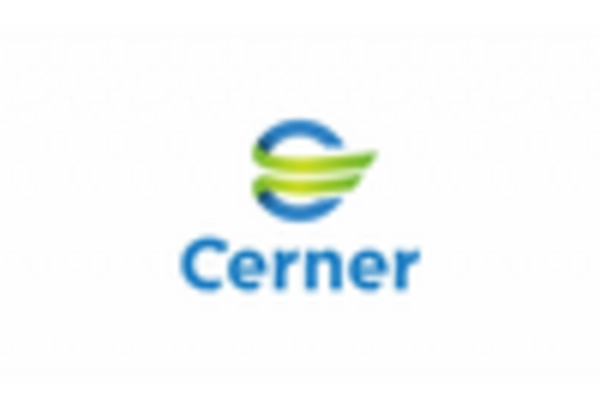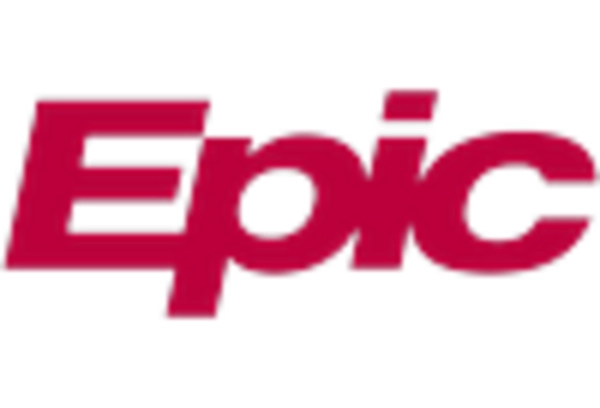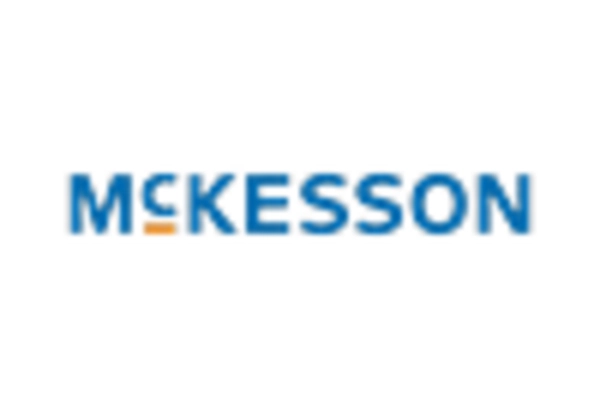Market Analysis
In-depth Analysis of Acute Care EHR Market Industry Landscape
The acute care EHR industry is vital to contemporary healthcare. Digitizing and integrating patient data in acute care allowed the sector to grow. Market dynamics highlight the revolutionary influence of electronic health record (EHR) systems in acute care. These dynamics are shaped by technology, legislative limits, and the goal of improving patient outcomes. EHR systems undergo ongoing technical changes to improve interoperability, enable seamless communication and data sharing across healthcare systems, and enhance interoperability. Modern elements like clinical decision support tools and mobile accessibility may help acute care operations. This will improve medical procedure speed and efficacy. Acute care electronic health record markets depend on the regulatory environment, which includes Meaningful Use (now Promoting Interoperability). CMS regulations influence EHR system design and use. This helps providers meet incentive program requirements. Acute care electronic health record systems centralize patient data, coordinate treatment, and improve healthcare practitioner communication to promote patient-centered care. By giving a comprehensive medical history, treatment plans, and progress, these systems allow cooperative and coordinated care. Integrating clinical decision support systems into acute care EHRs may enhance healthcare practitioners' decisions. This is feasible. These tools provide clinicians with real-time data, evidence-based advice, and alarms to enhance patient outcomes. Acute care EHR systems prioritize data security and privacy while digitizing patient health information. HIPAA compliance is essential for safe electronic health record system development and deployment. Telehealth is becoming more common, therefore acute care electronic health record systems now support it. These interfaces allow doctors to conduct virtual visits, and remote consultations, and share patient data. This ensures that patients get consistent treatment and are easily accessible, which is crucial under pressure. User training and acceptance are hurdles when installing EHR systems in acute care settings. Healthcare organizations provide extensive training to ensure that personnel are adept in EHR systems, overcome reluctance to change, and maximize efficiency. Acute care facilities handle a wide range of patient demographics, sizes, and specializations. Customization options help electronic health record (EHR) systems address these variances. These features ensure that the program meets the demands of acute care environments like hospitals and emergency departments. Acute care electronic health record (EHR) systems with data analytics capabilities allow healthcare companies to get insights from big datasets. Population health management helps identify patterns, stratify risks, and deploy individualized therapy to enhance patient health. All of these factors improve patient health. The use of artificial intelligence (AI) for predictive analytics, natural language processing for improved documentation, and interoperability standards to create a more connected and cohesive healthcare information ecosystem are expected to continue in the acute care EHR market. These are some projected future trends.

















Leave a Comment